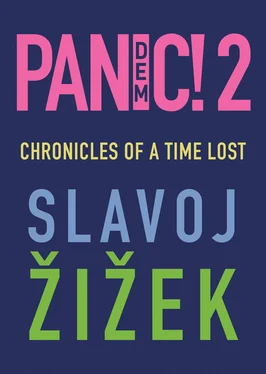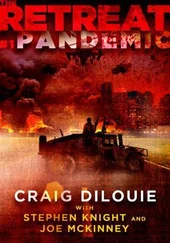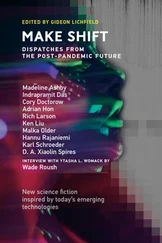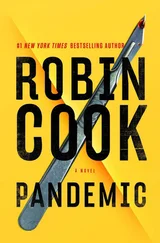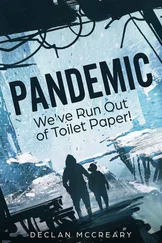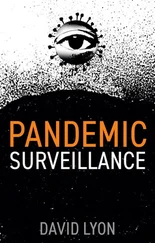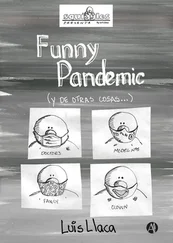Viruses are undead, always ready to spring back to life, and the irony is that their “immortality” echoes the immortality promised by the latest developments in brain science. The pandemic occurred at a time when pop-scientific media outlets are obsessed with two aspects of the digitalization of our lives. On the one hand, much is being written about so-called “surveillance capitalism,” a new phase of capitalism wherein total digital control is exerted over our existence by state agencies and private corporations. On the other hand, the media is fascinated by the topic of a direct brain–machine interface, or “wired brain.” With this, when my brain is connected to digital machines, I can cause things to happen in the outside world just by thinking about them; and, further, when my brain is directly connected to another brain, another individual can directly share my experience. Extrapolated to its extreme, the wired brain concept opens up the prospect of what Ray Kurzweil called Singularity, the divine-like space of shared global awareness. Whatever the (dubious, for the time being) scientific status of this idea, it is clear that its realization will affect the basic features of humans as thinking/speaking beings. The eventual rise of Singularity will be apocalyptic in the complex meaning of the term: it will imply the encounter with a truth hidden in our ordinary human existence, i.e., the entrance into a new post-human dimension.
It is interesting to note that the extensive use of surveillance has been quietly accepted in many parts of the world: drones were used to tackle the pandemic not only in China but also in Italy and Spain. As for the spiritual vision of Singularity, the new unity of the human and the divine, a bliss in which we leave behind the limits of our corporeal existence, could well turn out to be an unimaginable nightmare. From a critical standpoint, it is difficult to decide which is a greater threat to humanity: the viral devastation of our lives or the loss of our individuality in Singularity. The pandemic reminds us that we remain firmly rooted in bodily existence with all dangers that this implies.
Does this mean our situation is hopeless? Absolutely not. There are immense, almost unimaginable troubles ahead. There will be over a billion newly jobless people. A new way of life will have to be invented. One thing is clear: in a complete lockdown, we have to live off the old stocks of food and other provisions, so the difficult task now is to step out of the lockdown and invent a new life under viral conditions. Just think about the ways in which what is fiction and what is reality will change. Movies and TV series that take place in our ordinary reality, with people freely strolling along streets, shaking hands, and embracing, will become nostalgic images of a long forgotten past, while our real life will look like a variation of Samuel Beckett’s late drama Play, in which three identical gray urns appear on the stage and from each a head protrudes, the neck held fast in the urn’s mouth.
However, if one takes a naïve look at things (which is here the most difficult thing to do), it is clear that our global society has enough resources to coordinate our survival and organize a more modest way of life, with local food shortages compensated by global cooperation, and with global healthcare better prepared for the next onslaught. Will we be able to do this? Or will we enter a new barbarian age in which our attention to the health crisis will only enable conflicts like the reignited Cold War between the US and China, or the hot wars in Syria and Afghanistan, to continue out of sight of the global public? These conflicts operate in the same way as a virus: they drag on interminably. (Note how Macron’s call for a world-wide truce during the pandemic was flatly ignored.) This decision as to which route we will take concerns neither science nor medicine, it is a properly political one.
1 1. https://www.theguardian.com/commentisfree/2020/may/03/donald-trump-reopen-us-economy-lethal-robert-reich
2 2. http://www.bbc.com/earth/story/20170504-there-are-diseases-hidden-in-ice-and-they-are-waking-up
2. THE FIRST OF MAY IN THE VIRAL WORLD
Maybe, on the first of May, the moment has come to take a step back from our exclusive focus on the pandemic and consider what it and its devastating effects disclose about our social reality.
The first thing that strikes me is that, contra to the cheap motto “we are now all in the same boat,” class divisions have exploded. At the very bottom of the hierarchy, there are those (refugees, people caught in war zones) whose lives are so destitute that Covid-19 is for them not the main problem. While they are still mostly ignored by our media, we are bombarded by sentimental celebrations of nurses on the frontline of our struggle against the virus—the Royal Air Force even organized a flypast in their honor. But nurses are only the most visible part of a whole class of caretakers who are exploited, although not in the way the old working class of the Marxist imaginary is exploited; as David Harvey puts it, they form a “new working class”:
The workforce that is expected to take care of the mounting numbers of the sick, or to provide the minimal services that allow for the reproduction of daily life, is, as a rule, highly gendered, racialized, and ethnicized. This is the “new working class” that is at the forefront of contemporary capitalism. Its members have to bear two burdens: at one and the same time, they are the workers most at risk of contracting the virus through their jobs, and of being laid off with no financial resources because of the economic retrenchment enforced by the virus. The contemporary working class in the United States—comprised predominantly of African Americans, Latinos, and waged women—faces an ugly choice: between suffering contamination in the course of caring for people and keeping key forms of provision (such as grocery stores) open, or unemployment with no benefits (like adequate health care). 1
This is why revolts recently erupted in the poor northern suburbs of Paris where those who serve the rich live. This is why, in recent weeks, Singapore has had a dramatic spike in Covid-19 infections in foreign worker dormitories. As one news report explains, “Singapore is home to about 1.4 million migrant workers who come largely from South and Southeast Asia. As housekeepers, domestic helpers, construction workers and manual laborers, these migrants are essential to keeping Singapore functioning—but are also some of the lowest paid and most vulnerable people in the city.” 2This new working class was here all along, the pandemic just propelled it into visibility.
To designate this class, Bruno Latour and Nikolaj Schultz coined the term “geo-social class.” 3Much of this class is not exploited in the classic Marxist sense of working for those who own the means of production; they are “exploited” with regard to the way they relate to the material conditions of their life: access to water and clean air, health, safety, Local populations are exploited when their territory is used for industrial agriculture or intensive mining to feed exports. Even if they don’t work for foreign companies, they are exploited in the simple sense of being deprived of the full use of the territory that enables them to maintain their way of life. Take the Somali pirates: they turned to piracy because their coastal waters were depleted of fish by foreign companies’ industrial fishing practices. Part of their territory was appropriated by the developed countries and used to sustain our way of life. Schultz proposes to replace here the appropriation of “surplus-value” with the appropriation of “surplus-existence,” where “existence” refers to material conditions of life. 4
Читать дальше
